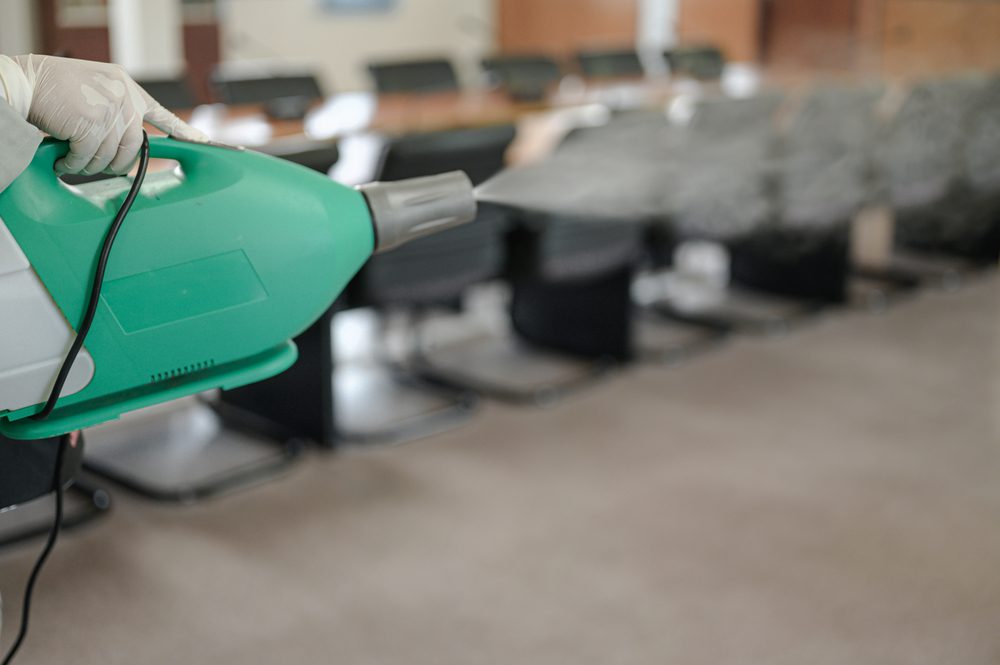As a facility manager, staying up to date on the latest trends and technologies enables you to maintain a clean building. Thankfully, the cleaning industry is continuously innovating in order to meet today’s and tomorrow’s challenges. This has been especially true during the COVID-19 pandemic, with new tools being launched and adopted.
Once you’ve identified a cleaning technology that will make your cleaning program more efficient, effective, sustainable or safer, it’s important to be able to confidently sell it to the decision makers within your organization. Read on to learn more about specific technologies to consider and best practices for successful implementation.
Taking Cleanliness to the Next Level
The cleaning industry has come a long way in the last decade, and even more so within the last two years given the emergence of SARS-CoV-2. Today, there are technologies that lend additional support to cleaning professionals. Some make the process of cleaning less strenuous and therefore less injury prone, while others make cleaning more consistent or efficient. The following technologies can help your operation reach its cleanliness goals:
Robotic floor scrubbers
Address your labor challenges and improve productivity with a robotic floor care solution that works in tandem with your employees. A robotic floor scrubber uses advanced artificial intelligence that improves upon safety, allowing it to avoid people and obstacles like staircases and furniture. Additionally, automated scrubbers deliver reports at the conclusion of operation to drive continuous improvement—all while allowing employees to address other high-priority tasks in the meantime.
Electrochemically activated solutions (ECAS)
These cleaning and disinfecting solutions are produced in your supply closet with an on-site generator and only three ingredients: salt, water and electricity. ECAS are just as effective as conventional chemicals but do not contain potentially harmful ingredients that can lead to eye and skin irritation and ECAS are non-irritating to the eyes and skin and contain no added fragrance but are still 99.999% effective at killing germs. Implementing ECAS streamlines worker training and eliminates burns. They are also better for the environment, as eliminating recurring chemical shipments reduces greenhouse gas emissions and plastic waste associated with single-use spray bottles and containers.
Electrostatic sprayers
This process entails spraying an electrostatically charged mist onto various surfaces or objects. The spray itself is a specialized solution combined with air and atomized by an electrode inside the sprayer. Because the spray contains positively charged particles that aggressively adhere to surfaces, the chemical is able to adequately disinfect the covered surfaces. There are even backpack versions of electrostatic sprayers that make it easy for employees to carry the equipment as they disinfect.
Automated vacuum cleaners
Collaborative robot, or “cobot”, vacuums can be used autonomously thanks to their built-in AI platforms, which take the hassle out of manual vacuum sweeping. Many of these systems are powered by advanced commercial operating systems that allow your vacuum to develop its own flight plan for areas that require cleaning. They’re efficient and clean up to 50% better than traditional vacuums.
Cleaning verification programs
Applying a cleaning verification program to your routine can help provide clearer visibility into the compliance and consistency of your cleaning procedures. This will allow you to advance clearer and safer standards of cleaning across your locations, ensuring all building occupants are satisfied, your reputation is upheld and more opportunities to grow your business are revealed.
Tips for Talking about Technology
When attempting to gain approval to implement a new technology in your facility, it’s important to consider the following best practices:
Humanize your pitch.
Framing the technology around the benefits it delivers to those who work in and use your facility is key. For example, many technologies make cleaning more efficient and less strenuous, providing benefits for the organization as a whole as well as individuals.
Once the technology is approved, you will want to also highlight the benefits to those who will be using it regularly. The more your cleaning professionals understand that this technology is working alongside them to increase productivity, rather than hinder or replace manual efforts, the quicker adapting to these changes is likely to occur.
Address safety.
Reflect on how the technology will make the cleaning process safer, and your building safer. For example, robotic floor scrubbers adequately remove chemical and water from floors, thereby reducing the risk of slip-and-fall accidents. Also, having properly measured chemicals prevents unnecessary safety hazards.
Take the environment into consideration.
Discuss how the technology will reduce water, chemical or energy consumption. When chemicals are accurately dispensed, target areas get clean the first time. This prevents you from having to use more chemicals, water and energy for second or third cleanings.
Be ready for questions.
Be prepared to answer detailed questions about how the technology works, why it’s superior to current methods, the cost to implement the technology and anticipated return on investment.
In the COVID-19 pandemic era, there is no time like the present to begin addressing necessary changes to your cleaning program. Rising innovations in sustainability and safety practices have produced game-changing tools you can confidently say will make an impact on the cleanliness of your facility.
You can partner with a building service contractor that prioritizes using high-tech equipment to further enhance your cleaning program. At GSF USA, we care about clean and the people behind clean. Contact our team here and follow us on LinkedIn and Facebook to learn more.

